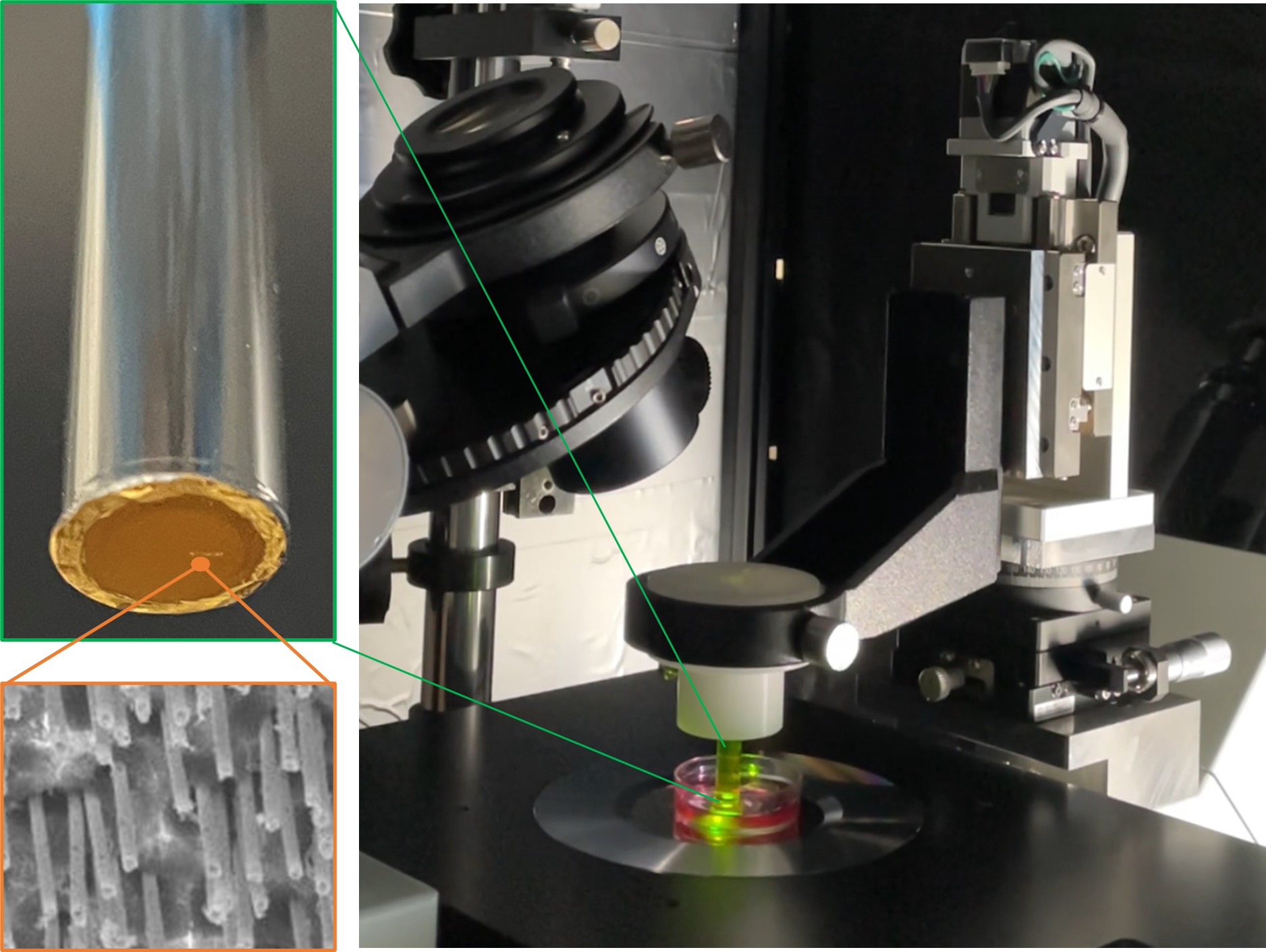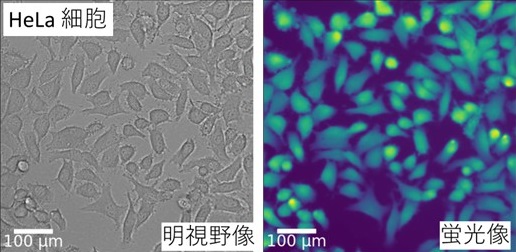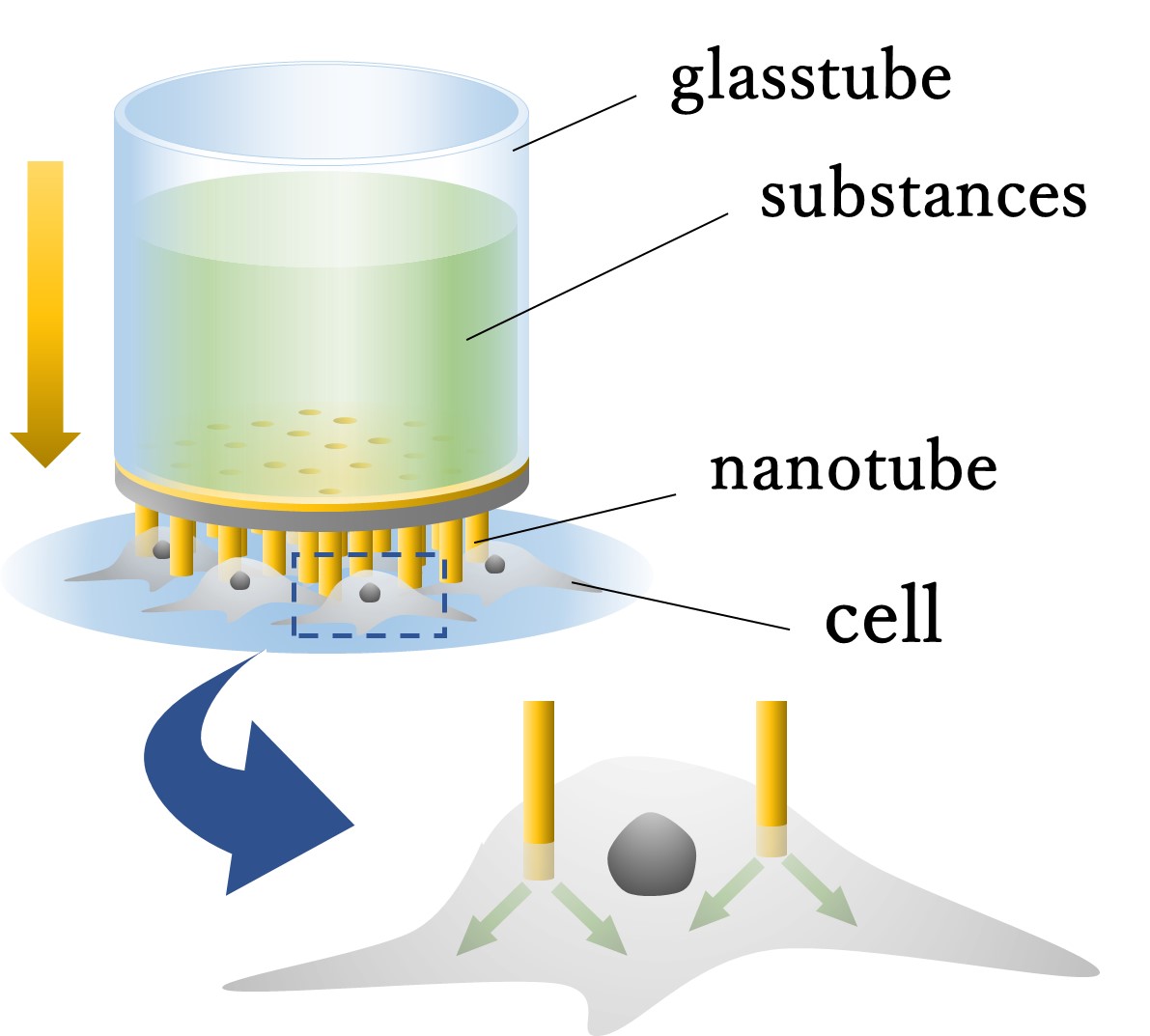




Nanotube stamping is a substance delivery method that can introduce substances without endocytosis under high cell viability and delivery efficiency. Endocytosis is a phenomenon in which a substance on the cell membrane surface is wrapped by the cell membrane, forming a vesicle, and is followed by delivering to the inside of the cell membrane. The substances are taken up by endocytosis which are then degraded by lysosomes via endosomes or released to the outside of the cell by exocytosis. Thus, substances that are introduced into the cells by endocytosis have different pathways after its introduction depending on the type of substance, which may cause inconveniences such as digestion and elimination before the function of the introduced substance is expressed. On the other hand, utilizing the nanotube stamping method involves having a membrane with an array of nanotubes pressed against an adherent cell from above to create a hole in the cell membrane for direct delivery of the substance solution. Therefore, it is a promising method of inducing cell differentiation by introducing DNA, mRNA, or any protein that is impermeable to the cell membrane, to add new functions to cells, or to evaluate cellular responses to drug introduction. For example, when the fluorescent substance Calcein was introduced into fetal mouse fibroblasts, high transfection efficiency (85 %) and cell viability (90 %) were reported.
The research group has previously achieved an appropriate depth of penetration of nanotubes into cells at approximately "10 μm" in thickness by controlling the height of the nanotubes with image processing and motorizing the insertion of the nanotubes with an electric stage.
Currently, the group aims to introduce materials into various cells using the nanotube stamping method and to improve the introduction in the performance of the nanotube stamping method.